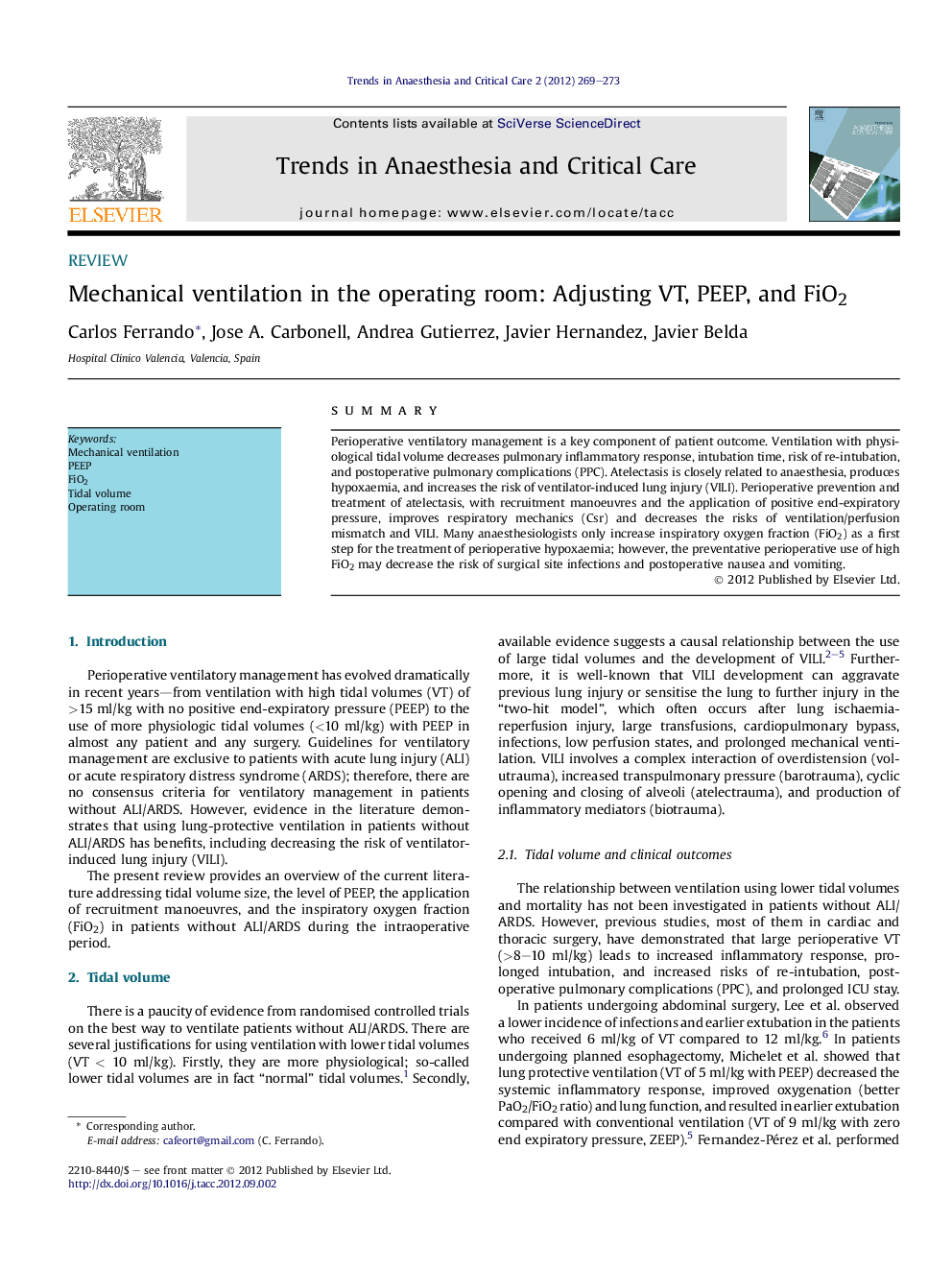| Article ID | Journal | Published Year | Pages | File Type |
|---|---|---|---|---|
| 2772611 | Trends in Anaesthesia and Critical Care | 2012 | 5 Pages |
SummaryPerioperative ventilatory management is a key component of patient outcome. Ventilation with physiological tidal volume decreases pulmonary inflammatory response, intubation time, risk of re-intubation, and postoperative pulmonary complications (PPC). Atelectasis is closely related to anaesthesia, produces hypoxaemia, and increases the risk of ventilator-induced lung injury (VILI). Perioperative prevention and treatment of atelectasis, with recruitment manoeuvres and the application of positive end-expiratory pressure, improves respiratory mechanics (Csr) and decreases the risks of ventilation/perfusion mismatch and VILI. Many anaesthesiologists only increase inspiratory oxygen fraction (FiO2) as a first step for the treatment of perioperative hypoxaemia; however, the preventative perioperative use of high FiO2 may decrease the risk of surgical site infections and postoperative nausea and vomiting.
